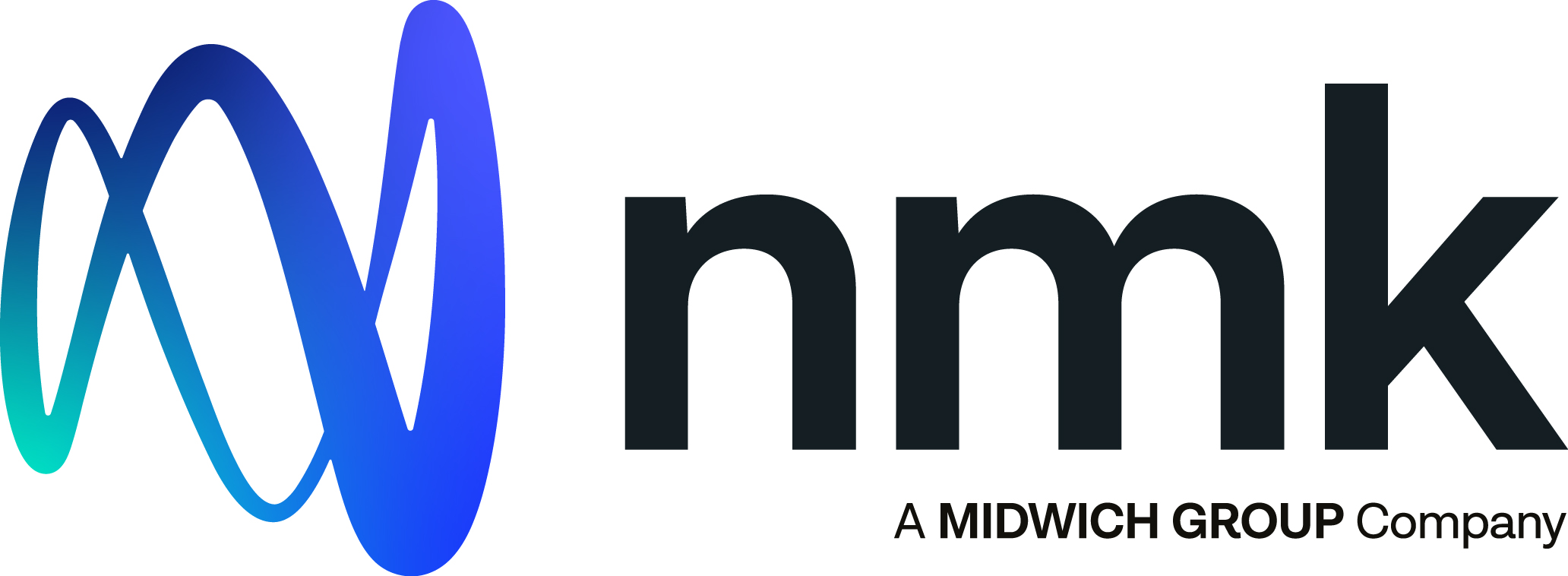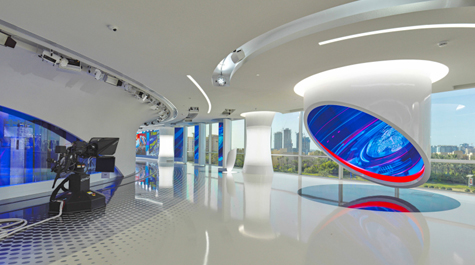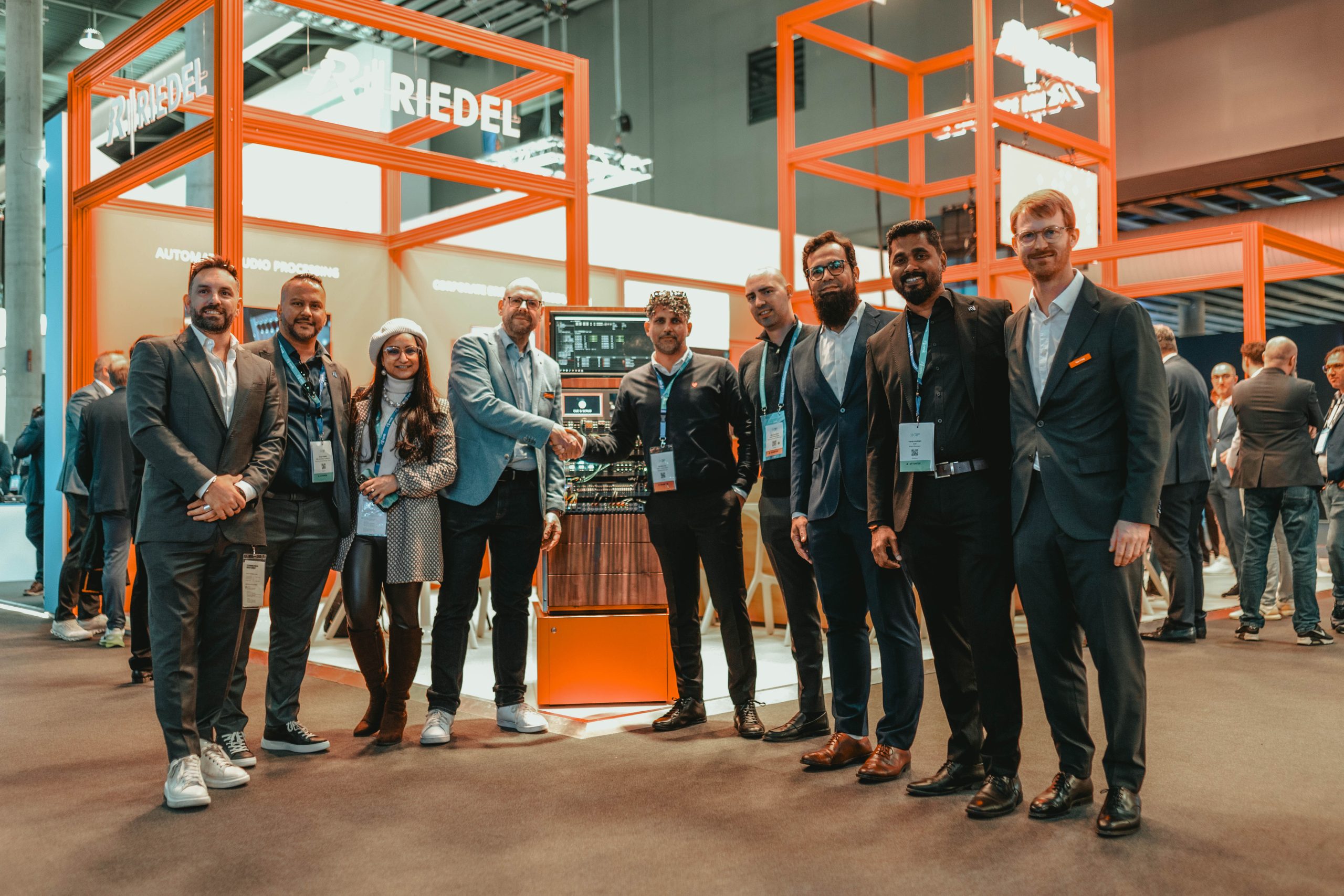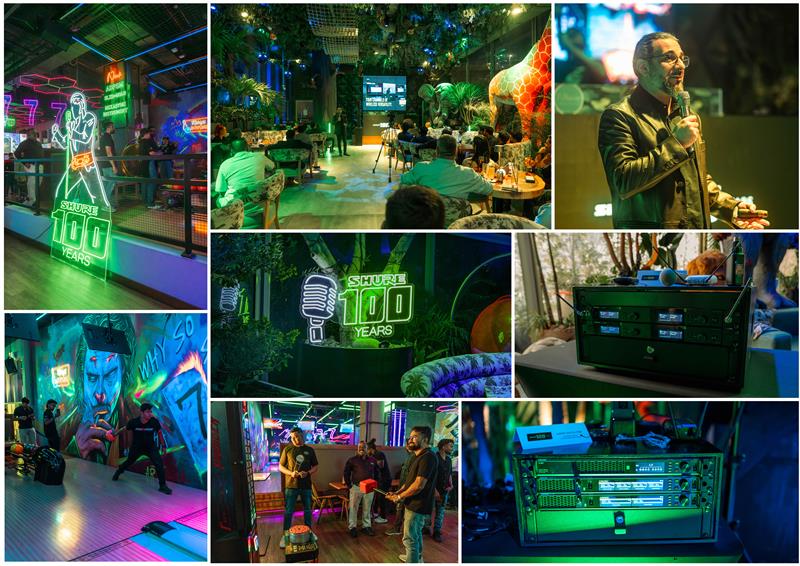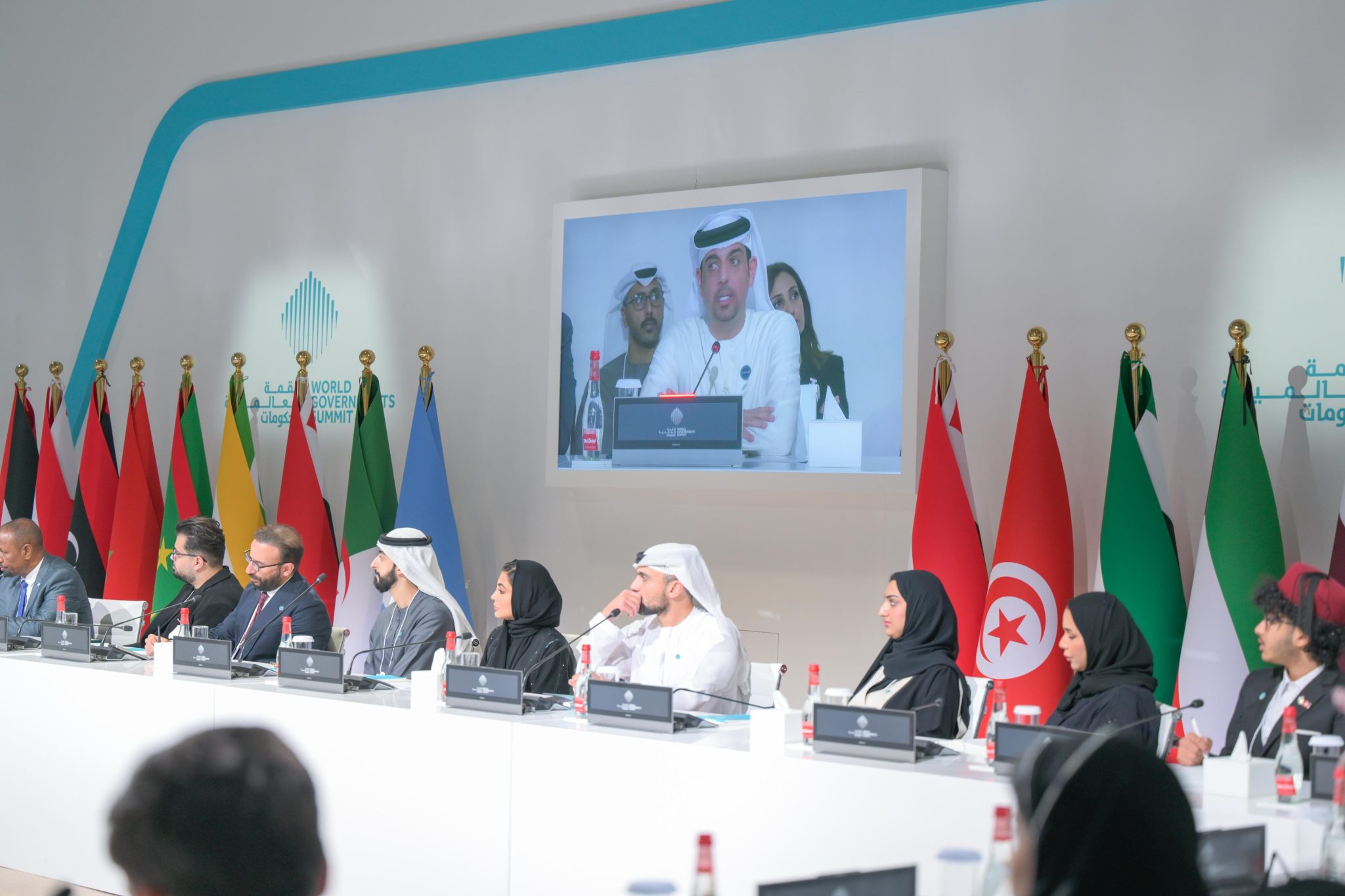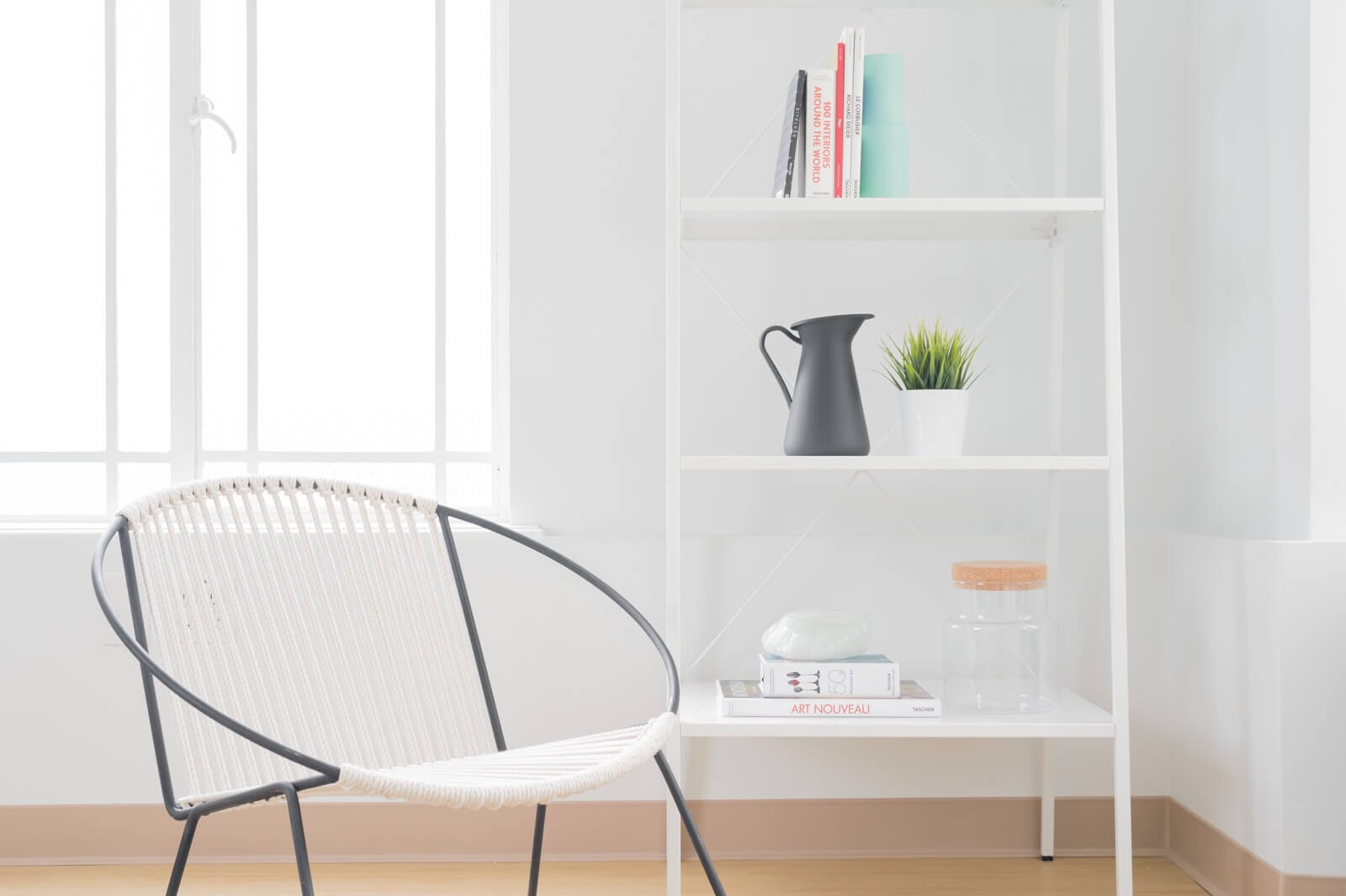A case study on overcoming major hurdles to create a futuristic studio that is a true testament to advancement in broadcast audio technology.
Local Arab news station Al Arabiya has been on-air for close to two decades. The Saudi-owned channel was founded in 2003 and ever since then it has etched a place in Arab audiences’ hearts. The free-to-air channel, which is part of the wider MBC Group network, is a go-to destination for the latest news and infotainment programming.
The studio and equipment in which content was filmed went largely unchanged until a decision was made to overhaul the entire operation from ground up. A futuristic “open-plan” studio was conceptualised where newsroom staff and anchors would operate in plain sight, with not even a glass wall to filter back-office sound.
Al Arabiya’s decision to do away with traditional studios was a bold move that brought several challenges with it, not just from a technical stand point but aesthetically as well. Each aspect such as video, graphics, augmented reality and fit-out is a marvellous feat by itself. However, in this case study we will focus on audio and sound enhancements.
Basheer Saad, sound / audio supervisor, Al Arabiya has been with Al-Arabiya and parent-channel MBC since the early noughties. Saad is a veteran audio specialist who has overseen every audio-related project at the TV station’s Dubai Media City-based offices.
The challenge
Al-Arabiya’s Dubai Media City location means it is surrounded by broadcasters, which is particularly challenging since frequency, power, and satellite channel interference can cause audio-related disruptions. The studios are also in close proximity to the Dubai Amphitheatre which, in pre-pandemic times, is a popular venue for several large music concerts and events. “We are totally prepared for any unexpected incident from a technical stand point,” Saad tells Digital Studio ME.
Giving a snapshot into the past, Saad says: “Our studio space was limited to a zone on the floor, it was a studio in a traditional sense, which was used for filming news, sports, business and all other content. Live talk shows were also hosted in our studios.
At its outset in 2003, Al-Arabiya operated with a 24-channel analogue audio console, the audio input and output systems received timely upgrades but a bigger overhaul was on the cards, Saad tells Digital Studio ME.
In terms of microphones, the studio was using Shure's analogue UHF-R mics, which would soon become redundant with the switchover to an open plan studio. “As great as those mics were, we needed an upgrade,” he adds.
We are based in a standard office building, with a ceiling to match. This not only causes challenges with mounting lights but audio arrangements as well. There's also standard air conditioning ducts and vents that are required to operate non-stop. All these factors work against RF mics.Finally, Al Arabiya’s office ceiling doesn’t have the height required by most studios. “We are based in a standard office building, with a ceiling to match. This not only causes challenges with mounting lights but audio arrangements as well. There's also standard air conditioning ducts and vents that are required to operate non-stop. All these factors work against RF mics."
The Solution
Mahmoud Issa, head of news resources, Al Arabiya gives an insight into the idea behind the upgrade. “As one of the leading free-to-air channels in the region, we are driven to improve and better our output quality. We wanted to make something special, and started the process over a year back when we began looking for designers. One of them gave us a plan that made the studio appear as an egg from the top. We liked the suggestion, it suited what we were looking for both from an editorial and technical standpoint.
“Today, the delivery of news has evolved past what we used to produce in our studios. Elements such as video walls are critical in the storytelling process, presenters interact with them to paint a holistic picture of the story. We use more of the studio to tell the story.”
With the task laid out in front of them, Issa’s team members headed specific verticals to deliver what would end up being one of the most advanced open-plan studios in the Gulf.
.jpg?itok=bZcvLmLm)
Image caption: Mahmoud Issa, head of news resources, Al Arabiya (centre) and Basheer Saad sound / audio supervisor, Al Arabiya (extreme right) along with Safwan Harcouss, lighting manager; Antoine Atyeh, cameraman supervisor; and Khaled Tarboush, production supervisor.
The open concept also meant that presenters needed to be able to move from different “zones” of the studio without drop in audio signal. “That created a challenge with the audio as we needed to cover the whole area with microphones. The presenters needed to move from zone to zone without any drop in signal.”
Another issue was the “noise” that emanated from the swanky new video walls. The requirement was for a high-end advanced system that would work under the most difficult technical circumstances.
We decided to install Shure’s Axient Digital Wireless system audio solution. This system stands out thanks to its quadversity system, where each receiver is connected to four antennas, two in Zone A and two in Zone B. This ensures that the line of sight is always maintained between the transmitters and receivers. That takes care of dropout when presenters move between Zone A and Zone B“We decided to install Shure’s Axient Digital Wireless system audio solution. This system stands out thanks to its quadversity system, where each receiver is connected to four antennas, two in Zone A and two in Zone B. This ensures that the line of sight is always maintained between the transmitters and receivers. That takes care of dropout when presenters move between Zone A and Zone B,” Saad explains.
In terms of other technologies Shure’s link device is connected to the system which helps in interference protection. “This lets us control the microphones remotely when we are on-air, and monitor them, and play with the spectrum manager to ensure any sort of interference is kept at bay.”
It’s important for presenters “to feel connected” while during a piece-to-camera. For this this a dedicated transmitter takes care of the in-ear monitor system. “It’s completely expected that an 'RF dead line' is created between the two antennas. In this case, the helical antennas deliver high gain and directivity. It works in a circular polarised pattern which guarantees coverage in all areas of the studio, in addition to the PSM-1000 system with the P-10R+ in-ear monitors used by presenters,” Saad reveals.
Helical antennas get their name from their spherical shape which aid in them providing greater bandwidth and longer range gain for receivers, transmitters, and distribution systems.
Investment and result
Al-Arabiya’s studios have come a long way from its humble beginnings, and with the overhaul the move has truly transpired a digital transformation. As for the 48 channel audio mixer, Saad says it has long been replaced by a state-of-the-art 340-channel digital unit.
“We moved from analogue to an audio-over-IP network. All the studios are connected using the DANTE network, while all consoles are connected with the MADI network - we are running two parallel networks on these systems,” Saad says.
Issa adds that money wasn’t a deterrent in achieving the TV channel’s wider objective. He says: “At the end of the day, you have to look at your size in the market. We have a strong reputation, and there are times money isn't the only parameter to look at. For us it was a case of setting the precedent without looking at it as a financial investment. We went for the upgrade. Sure, it is a lot of money but it's a straightforward decision that was in front of us: Do you want to stay the best? Or simply stand still?”
“A few stations try and copy what we do, which makes change all the more inevitable. For a journalist such as yourself - the news needs to be told in the most direct way possible. Then it's up to us to add visual and acoustic elements to elevate the viewers’ experience. Both aspects are equally important and we have been able to achieve the right sort of blend with our revamped studios.”
.jpg?itok=TaR5yGkG)





